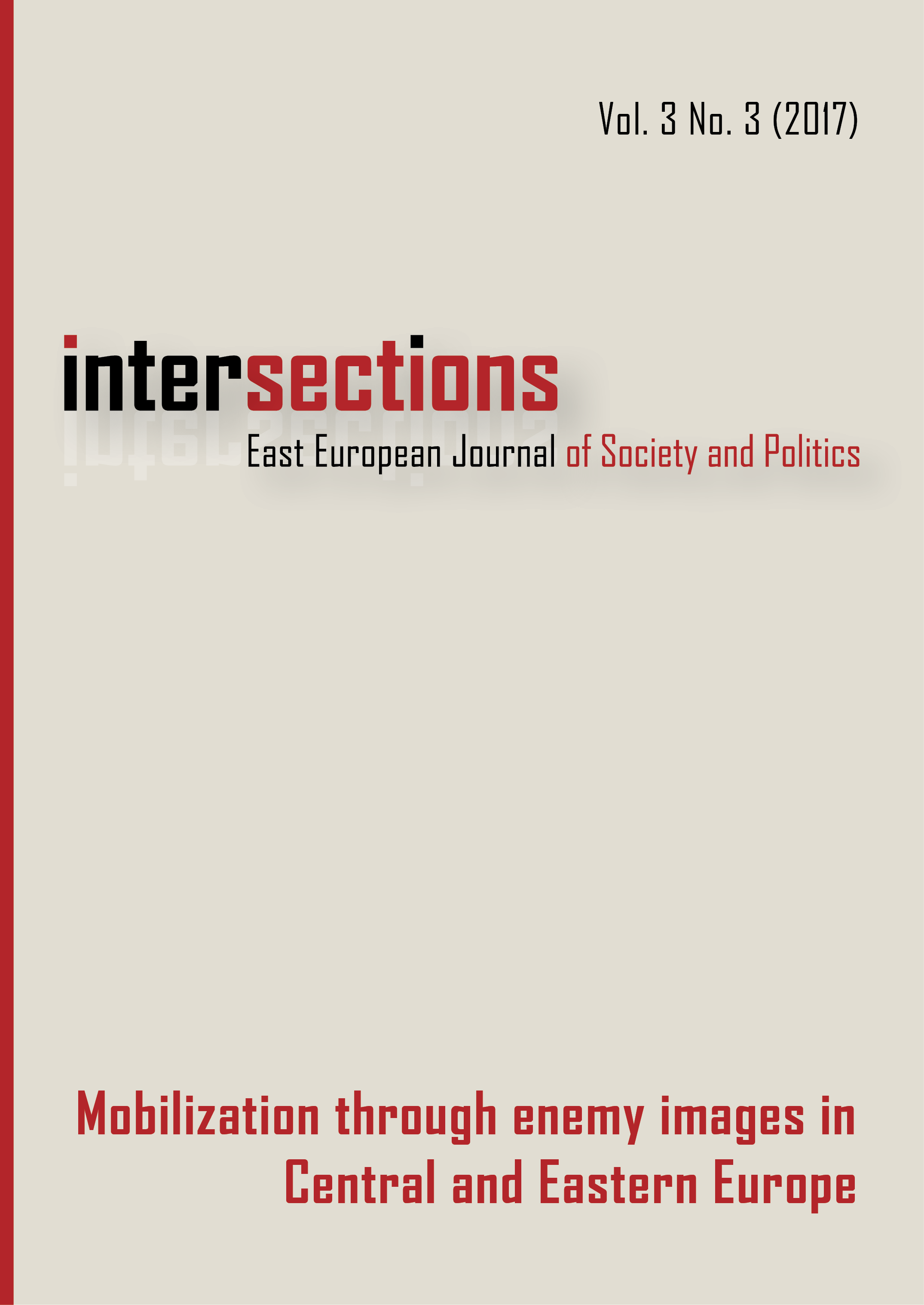Constructing a Political Enemy
Anti-communist Framing in the Czech Republic between 1990 and 2010
DOI:
https://doi.org/10.17356/ieejsp.v3i3.347Abstract
The Communist era and its legacy became an important part of Czech (political) culture and identity after 1989. This phenomenon is especially powerful in relation to the meaning making of the communist era after 1989 and the way Czechs are getting over it. Labels such as communist, Bolshevik, normalization, nationalization of property and many others related to the communist era became powerful vehicles for stigmatization and creating a public enemy in almost any sphere, be it political, show business, or public. What makes it especially powerful is that the cultural and historical legacies (understood as deliberately propagated representations of selected fragments of the group’s past), when expressed explicitly, offer models of or for behaviour and thinking. In other words, public memory is often one of the constitutive factors of contentious and politically motivated mobilizations undertaken by different actors like political parties, social movements or individual agents when seeking public support or legitimacy, or just aiming to achieve their goals. In post-communist countries these actors often strive to mobilize participants, supporters or even opponents using legacies of the Communist past. In this text we seek to uncover how various situations, events or people are constructed as public enemies by using the communist legacy. In particular, we ask the following questions: How is anti-communist framing constructed and how does anti-communist framing resonate with popular images and understanding of Communism, the Communist era in the Czech Republic and related matters? We analyse anti-communist framing (i.e. directly or indirectly identify the situation, adversaries, institutions or activities with the Communist regime) and via constructing metaphors provide readers with deep understanding of how particular Communist legacies in specific contexts create public enemies who lose sympathy and support from the public.

Downloads
Published
How to Cite
Issue
Section
License
Copyright Notice
Authors who publish with this journal agree to the following terms:
Authors retain copyright and grant the journal right of first publication, with the work three months after publication simultaneously licensed under a Creative Commons Attribution License that allows others to share the work with an acknowledgement of the work's authorship and initial publication in this journal.
Authors are able to enter into separate, additional contractual arrangements for the non-exclusive distribution of the journal's published version of the work (e.g., post it to an institutional repository or publish it in a book), with an acknowledgement of its initial publication in this journal. This acknowledgement is not automatic, it should be asked from the editors and can usually be obtained one year after its first publication in the journal.



